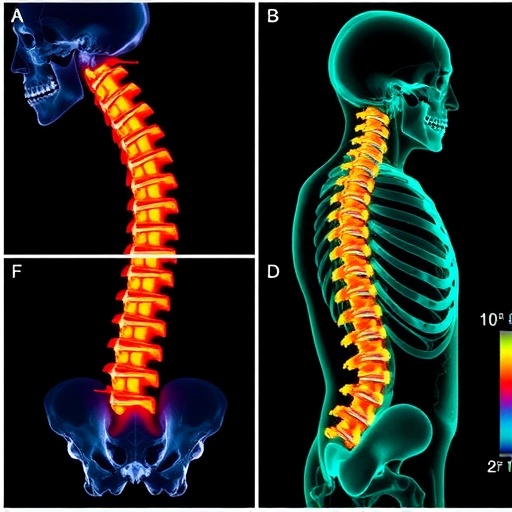In an era where technological advances are irrevocably altering the landscape of healthcare, particularly in surgery, the integration of novel methodologies to enhance surgical outcomes has become paramount. The recent study titled “Statistical Surgical Process Modeling: Analysis of Workflow and Performance of Emerging Technologies in Image-Guided Spine Surgery,” conducted by a distinguished group of researchers, sheds light on the transformative potential of data-driven approaches in optimizing surgical processes.
The study explores the application of statistical models to evaluate the efficacy of emerging technologies in image-guided spine surgery, an area that has witnessed rapid advances due to innovations in imaging and minimally invasive techniques. The central premise of this study is that a thorough analysis of surgical workflows can lead to improved outcomes, reduced complications, and heightened efficiency in operating rooms. This research also addresses the challenges faced in traditional surgical methods, highlighting the need for a more systematic approach to meet the demands of modern healthcare.
Understanding the workflow in spine surgeries is complex. It involves multiple stages, including pre-operative planning, intra-operative navigation, and post-operative care. Each phase presents unique challenges and opportunities for optimization. The researchers employed statistical surgical process modeling, which utilizes a combination of quantitative data analysis and predictive modeling to dissect these workflows into manageable components. By leveraging this methodology, they are able to pinpoint inefficiencies and areas for improvement, establishing a clear pathway towards enhanced surgical performance.
One of the main findings from this study is the importance of real-time data in surgical settings. The advancement of technologies, including intra-operative imaging and navigation systems, has enabled surgeons to access crucial information during procedures. This not only improves the accuracy of surgical interventions but also empowers clinicians to make swift decisions based on real-time analytics. The researchers argue that an effective incorporation of these technologies, when analyzed through a statistical lens, can significantly streamline the surgical process and improve patient outcomes.
As part of their analysis, the research team collected extensive data from various spine surgery cases. They examined metrics such as operation times, complication rates, and recovery times, correlating these with specific technological interventions. Through multivariate statistical techniques, they identified trends that indicated the efficacy of certain technologies over others. Such insights are invaluable, offering concrete evidence for the adoption of best practices in surgical environments and providing a blueprint for hospitals aiming to enhance their surgical offerings.
The potential implications of the study extend beyond spinal surgery, suggesting a framework that could be applied across multiple surgical specialties. The researchers advocate for a shift towards a more data-centric approach to surgery, where metrics and analytics drive decision-making processes. This paradigm shift could foster an environment where surgical teams are not only reactive but also proactive, anticipating issues before they arise based on data-derived projections.
In addition to improving surgical outcomes, this research emphasizes the importance of interdisciplinary collaboration. Surgeons, engineers, data analysts, and healthcare administrators must come together to create a cohesive system that leverages technology and statistics. By sharing insights and expertise, they can develop integrated workflows that enhance both performance and safety in the operating room.
Another critical aspect highlighted by the researchers is the role of training and education in implementing these technological advancements. Surgeons and surgical staff must be equipped with the knowledge and skills necessary to utilize modern tools effectively. This includes understanding data analytics and how to interpret statistical models in the context of surgical procedures. Continuous education in this regard is essential for ensuring that the benefits of technological advances are fully realized in practice.
In considering the future of image-guided spine surgery, the pathway laid out by this research suggests a burgeoning field ripe for innovation. The combination of statistical modeling and emerging surgical technologies holds the promise to transform how surgeries are performed and evaluated. By breaking down complex workflows into quantifiable components, the medical community can foster an era of precision surgery, where interventions are tailored to individual patient needs, resulting in optimal outcomes.
The research also underscores the importance of large-scale data collection and the development of robust databases. As healthcare systems increasingly embrace electronic health records and data analytics, the potential for large datasets to inform surgical practices grows. This vast repository of information, when coupled with advanced analytical techniques, could ultimately lead to a paradigm shift in the way surgical processes are conceptualized and executed.
Furthermore, while the study focuses on spine surgery, the methodology employed could have broader applications in various surgical disciplines. From cardiac procedures to orthopedic surgeries, the principles of statistical surgical process modeling can offer critical insights, driving improvements across healthcare sectors. As such, the findings could serve as a catalyst for further research aimed at refining surgical practices everywhere.
In conclusion, the intersection of technology, data analysis, and surgical practice presents an exciting frontier in medicine. The insights garnered from this research hold the potential to revolutionize spine surgery—and indeed, surgery at large—by fostering an environment where data drives decisions, improves efficiency, and enhances patient outcomes. As this field continues to evolve, embracing these innovations may very well define the future of surgical care.
The contributions from this study illustrate not only the benefits of adopting a statistical approach to surgical processes but also the challenges that lie ahead. It is imperative that the medical community approach these advances with a mindset open to collaboration, innovation, and ongoing education to ensure that the transformative potential of these technologies is fully realized in clinical practice.
Subject of Research: Image-Guided Spine Surgery
Article Title: Statistical Surgical Process Modeling: Analysis of Workflow and Performance of Emerging Technologies in Image-Guided Spine Surgery
Article References:
Deva, A., Rypinski, T.A., Pillai, P.S. et al. Statistical Surgical Process Modeling: Analysis of Workflow and Performance of Emerging Technologies in Image-Guided Spine Surgery.
Ann Biomed Eng (2025). https://doi.org/10.1007/s10439-025-03855-3
Image Credits: AI Generated
DOI: 10.1007/s10439-025-03855-3
Keywords: Image-Guided Surgery, Spine Surgery, Statistical Modeling, Surgical Workflow, Emerging Technologies, Data Analytics





